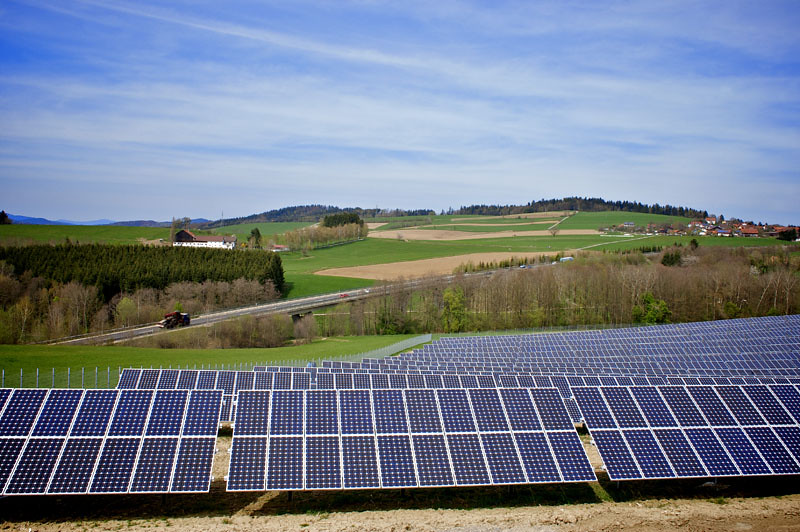UMASS EXTENSION GRANT WILL BRING SOLAR PLANNING TO WESTERN MASSACHUSETTS

Solar Park in Europe. Photo: flickr.com
Source: Umass Office Of News And Media Relations
A team at the University of Massachusetts Amherst Clean Energy Extension recently was awarded a 15-month grant to lead development of community-focused solar siting and financing procedures in three rural western Massachusetts communities, Blandford, Wendell and Westhampton.
The project will demonstrate “bottom-up” solar siting processes driven by community residents and municipal officials, and offer models for evaluating financing mechanisms that can keep solar benefits within the community, says project leader Dwayne Breger, director of Clean Energy Extension in the campus’s Center for Agriculture, Food and the Environment.
Among other goals, it will develop clear protocols and templates to support other rural New England and New York communities who wish to repeat the solar siting and finance processes in their own areas, he said.
The grant is one of eight awarded nationally this year by the U.S. Department of Energy’s National Renewable Energy Laboratory Solar Energy Innovation Network in its “Solar in Rural Communities” category. It is for just over $113,000 and is supplemented by $34,740 in external partner contributions.
Breger said the timing for the project is ideal. “While Massachusetts is widely recognized as a leader and innovator of rural solar policy and project implementation, competing objectives among the various stakeholders can occur – and rural communities may get left behind in the process. This effort will help to put the state’s communities and citizens in a strong position to determine where new projects are best located according to their specific needs and goals.”
The renewable energy and efficiency specialist notes that as a renewable energy leader, Massachusetts has created a series of solar-incentive programs that have led to the development of over 2,500 megawatts of solar photovoltaic capacity. But despite significant progress, the state faces challenges in meeting its greenhouse gas reduction commitments while maintaining reasonable electricity rates and ensuring proper solar siting, he added.
One obstacle has been widespread solar development on natural and agricultural lands in rural areas, which has provoked community resistance to large-scale solar projects in some cases. This has led to moratoriums, bylaw changes, litigation and an uncertain permitting environment, with negative effects on both solar development and local municipalities. In some cases, competing goals of solar developers, local planners and residents lead to friction and increased costs in solar development.
Breger says team members hope this project will shift the emphasis to “put rural residents and their municipal representatives in a proactive planning position through identification of preferred sites for solar development and preparation of local ownership and financing opportunities” – all geared to help rural communities better understand their solar development options while easing tensions among developers, residents and officials.
By streamlining the permitting process and identifying local capital/financing with a longer-term investment timeline, Breger notes, the project should also bring reduced solar “soft costs” such as architectural, engineering, financing, legal fees and other pre- and post-construction expenses for rural communities across the region.
Breger says that a rapid and sustained pace of solar development will be needed to meet future greenhouse gas reduction and renewable energy targets, but such goals will not be reachable without rural residents’ sustained support. This project offers “a set of planning tools that can be implemented across the Northeast to ensure that solar projects are well-sited, in line with the preferences of local communities and providing economic returns to those communities,” he said.
For additional information contact Dwayne Breger dbreger@umass.edu or Janet Lathrop, jlathrop@umass.edu

Again, if their energy return over energy input ratio (ERoEI) is less than 1, as the survey of efficiency studies that I cited appears to establish, these PV “farms” might better be called “the emperor’s new energy” – as much as we may wish the survey conclusions are wrong, please read it yourself:
https://www.sciencedirect.com/science/article/pii/S0301421516301379
Too bad volunteers in the towns that do all this work already can’t get paid thousands of dollars to do what they think is best for their towns. And without the big agenda of siting as much solar as possible in our rural areas. Franklin County already produces more electricity than it uses with hydro power, doesn’t it?